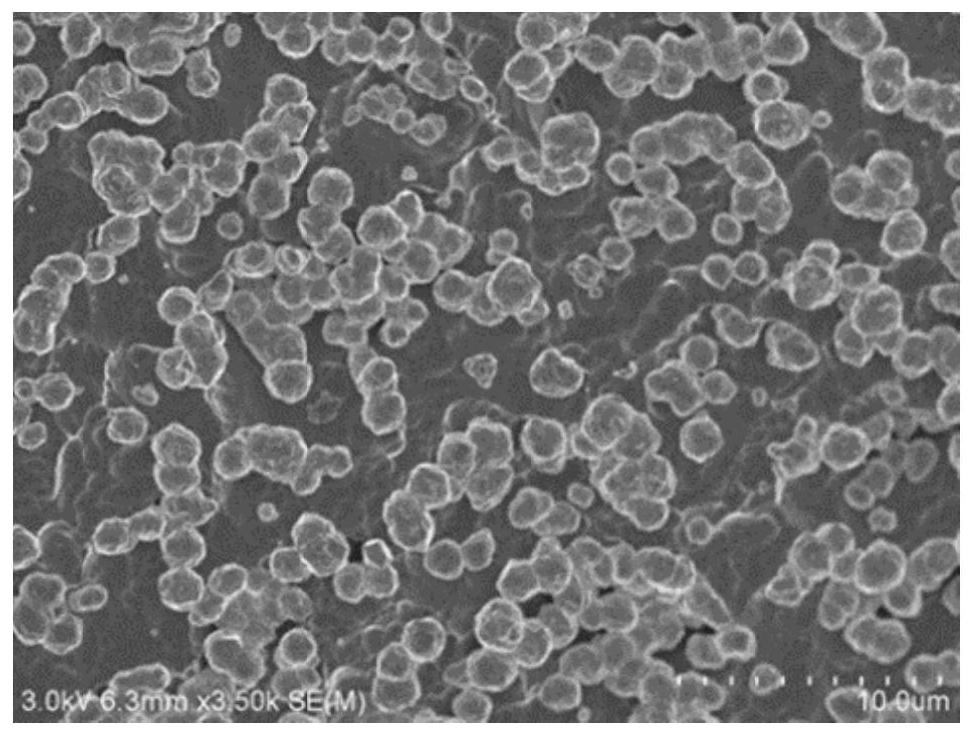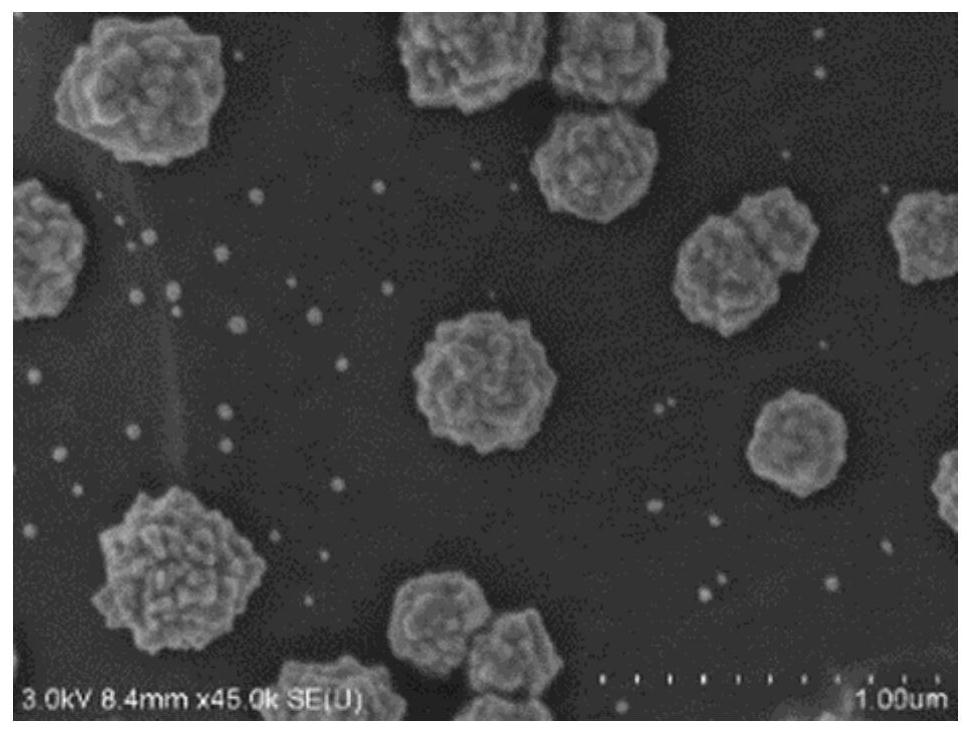Titanium substrate with metal nanoparticles growing on surface in situ and application of titanium substrate
A technology of in-situ growth of metal nanoparticles, applied in nanotechnology, nanotechnology, nanotechnology, etc. for materials and surface science, can solve the problem of uneven distribution of metal nanoparticles, inability to use in large quantities, and easy shedding of nanoparticles and other problems, to achieve the effect of mass production, simple and rapid preparation operation, and good chemical stability
- Summary
- Abstract
- Description
- Claims
- Application Information
AI Technical Summary
Problems solved by technology
Method used
Image
Examples
Embodiment 4
[0045]In Example 4, the theoretical calculation and simulation of picric acid solution adopts Gaussion03 software.
Embodiment 1
[0047] Alkaline degreasing: configure NaOH (4wt%), Na 2 CO 3 (2wt%) solution of 100 mL of solution, a batch of 1 cm × 3 cm × 0.5 cm titanium substrates were immersed in the solution, and sonicated at 53 kHz, 250 W for 30 min.
[0048] Oxalic acid etching: Rinse the titanium plate after degreasing with clean water, immerse it in a 20wt% oxalic acid solution, control the temperature of the solution to 98°C, and remove it after etching for 5 hours for cleaning.
[0049] Chemical growth of copper nanospheres: Immerse the pretreated titanium plate in the prepared chemical deposition solution, including ammonium fluoride (8g / L), copper sulfate pentahydrate (20g / L), citric acid (20g / L) ), sulfuric acid (0.8 vol%), deposited at 20° C. for 3 minutes, taken out, cleaned, and blown dry with nitrogen to prepare a titanium-based enhanced Raman substrate supported by copper nanospheres.
[0050] figure 1 This is a cold-field scanning electron microscope photograph of the prepared copper ...
Embodiment 2
[0053] Alkaline degreasing: prepare a 100 mL solution of NaOH (10wt%) solution, immerse a batch of 1cm×1cm×0.5cm titanium substrates in the solution, and sonicate at 53kHz and 250W for 1 hour.
[0054] Oxalic acid etching: Rinse the titanium plate after degreasing with clean water, immerse it in an oxalic acid (15wt%) solution, control the temperature of the solution to 98°C, and etch it for 3 hours, take it out and clean it for later use.
[0055] Chemical growth of gold nanoflowers: Immerse the pretreated titanium plate in the prepared chemical deposition solution, including ammonium fluoride (10g / L), chloroauric acid (1g / L), citric acid (20g / L) , hydrochloric acid (0.4 vol%), deposited in a solution at 20° C. for 2 minutes, taken out, cleaned, and blown dry with nitrogen to prepare a titanium-based enhanced Raman substrate supported by gold nanoflowers.
[0056] image 3 This is a cold-field scanning electron microscope photograph of the prepared gold nanoflower-loaded tit...
PUM
 Login to View More
Login to View More Abstract
Description
Claims
Application Information
 Login to View More
Login to View More - R&D
- Intellectual Property
- Life Sciences
- Materials
- Tech Scout
- Unparalleled Data Quality
- Higher Quality Content
- 60% Fewer Hallucinations
Browse by: Latest US Patents, China's latest patents, Technical Efficacy Thesaurus, Application Domain, Technology Topic, Popular Technical Reports.
© 2025 PatSnap. All rights reserved.Legal|Privacy policy|Modern Slavery Act Transparency Statement|Sitemap|About US| Contact US: help@patsnap.com



